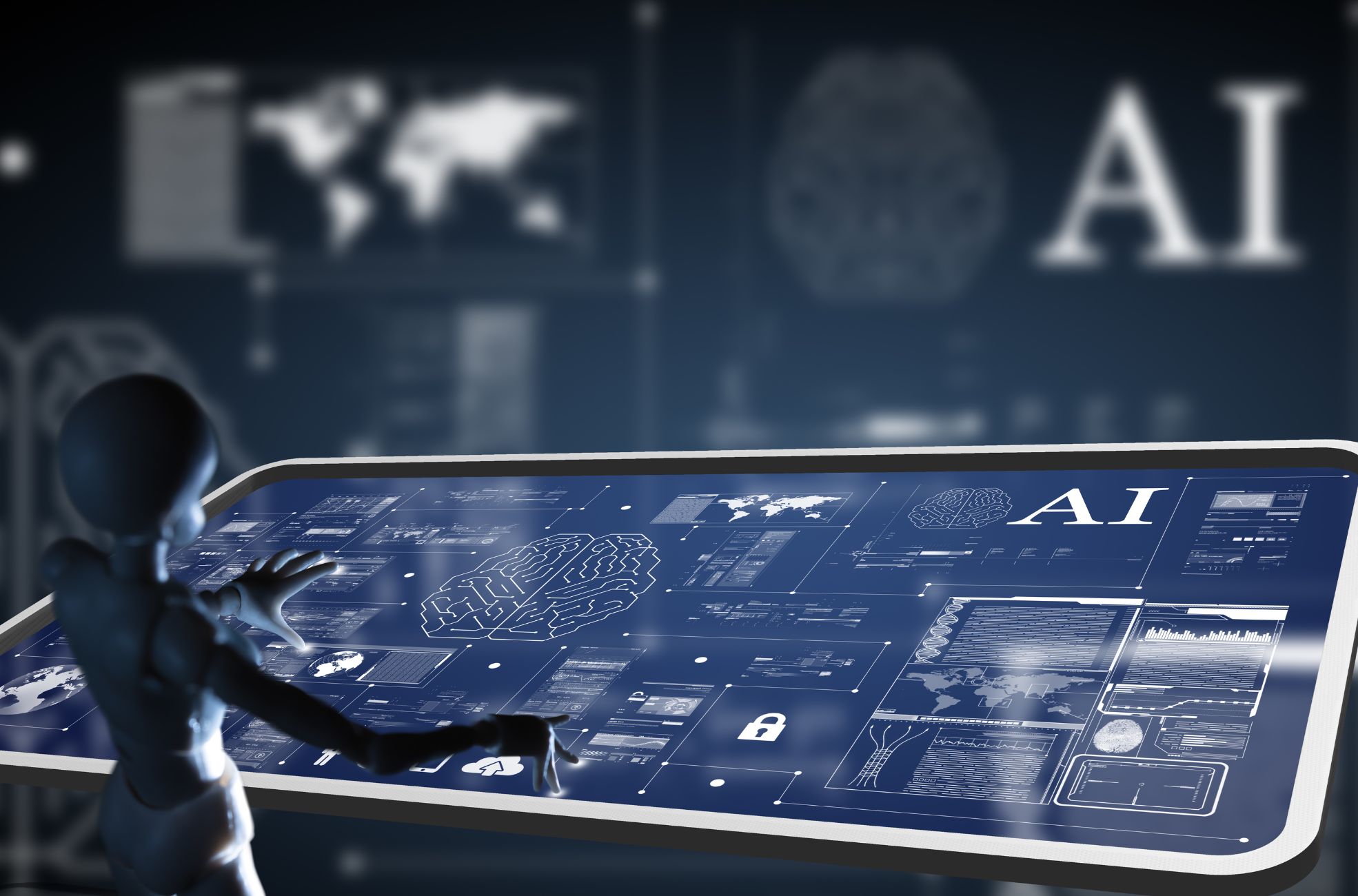Intriguing. Our world’s at the crossroads of technology and business, changing rapidly, and Generative AI’s at the core of this shift. As a subset of artificial intelligence, it’s producing new content that’s so precise you’d mistake it for human work.
You can leverage the potential of generative AI to reduce labelling costs, train AI models with less labelled data and gain a broader perspective of your data patterns. From automating tasks in healthcare to enhancing customer experiences in e-commerce, it’s revolutionising sectors. Want to be part of this wave?
Keep reading to discover the transformative role of Generative AI in business operations.
Understanding Generative AI
Definition and Basics of Generative Artificial Intelligence
Generative AI is a subset of artificial intelligence that focuses on creating new content. This content can range from images and videos to text, and it’s often so good you’d think a human made it.
This powerful tool can help you cut labelling costs by automatically generating additional training data. Or, it can learn an internal representation of the data, which lets you train AI models with less labelled data.
But remember, generative AI models need high-quality, unbiased data to work effectively.
The Science Behind Generative AI
Generative AI uses a variety of evolving techniques. AI foundation models are leading the way. These models are trained on a broad set of unlabelled data, which can be used for various tasks with fine-tuning.
These models can have billions of parameters and need fast and efficient data pipelines for training. They can be either unimodal, accepting only one input type, or multimodal, with large language models receiving more than one input type.
Major Types of Generative Artificial Intelligence Systems
There are several types of generative AI systems. Each is trained on different types of data and used for various tasks. For instance, designs trained on words or sentences, like GPT-3, GPT-2, BERT, Roberta, T5, and others, can generate text, translate, and summarise.
Systems trained on sets of images with associated labels, like DALL-E, StyleGAN, BigGAN, CycleGAN, and others, are commonly used for image generation and transformation. Then there are systems trained on sequences of chemical or molecular representations, like ChemBERTa, which are used for drug discovery and protein design.
Importance and Applications of Generative AI in Business
Generative AI has potential applications across a wide range of industries. In the automotive industry, it can help create synthetic data for car development and train autonomous vehicles. In healthcare, it can aid in medical research and automate tasks such as scribing, medical coding, medical imaging, and genomic analysis. In the entertainment industry, it can help streamline the content creation process.
Generative AI can also enhance your ability to draft and edit text, images and other media. It can summarise, simplify and classify content; generate, translate and verify software code; and improve chatbot performance.
Generative AI can give you a broader and deeper view of your data. This enhances pattern recognition and the ability to identify potential business risks quickly.
Companies like Microsoft and Amazon are already integrating generative AI technology into their products and services.
By 2025, it’s predicted that the percentage of data generated by generative AI will make up 10% of all generated data.
Role of Generative Artificial Intelligence in Business Sectors
Generative AI is revolutionising various business sectors by using algorithms to generate unique content across different modalities, including audio, code, simulations, and more. The process begins with a prompt, which could be a text, an image, a video, a design, musical notes, or any input the AI system can process.
The AI then generates new content in response to the prompt, such as essays, solutions to problems, or new designs created from pictures, text generation or audio.

Generative Artificial Intelligence in Healthcare
Generative AI is transforming the healthcare sector, particularly in the area of drug discovery. Identifying potential drug candidates can significantly expedite the drug discovery process, potentially saving billions of dollars and countless lives.
Impact of Generative AI on E-commerce
In the e-commerce sector, Generative AI is an ai tool for automating tasks such as writing product descriptions, creating marketing copy, and generating primary web content. This saves time and resources and ensures consistency and accuracy in the content. It can also be used to initiate interactive sales outreach and answer customer questions, enhancing the overall customer experience.
Role of Generative Artificial Intelligence in Entertainment
In the entertainment industry, Generative AI models are being leveraged to create photorealistic art in a particular style, improve product demonstration videos, and even suggest new drug compounds to test. This not only enhances the quality of the content but also makes the process of content creation easier and more efficient.
Generative AI in Scientific Research and Development
Generative AI is also playing a key role in scientific research and development. It’s being used to create synthetic data that can be used to train and evaluate other AI algorithms. This improves the efficiency and accuracy of existing AI systems.
In addition, Generative AI can be used to automate the manual process of writing content and reduce the effort of responding to emails. It can improve the response to specific technical queries, create realistic representations of people, summarise complex information into a coherent narrative, and simplify creating content in a particular style.
However, it’s important to note that developing Generative AI models requires significant capital investment, technical expertise, and large-scale, massive computing power and infrastructure. Therefore, you must consider these factors carefully before investing significant resources in Generative AI.
Working Principle of Generative Artificial Intelligence
The inception of generative AI can be traced back to the 1960s with the advent of chatbots. However, the emergence of Generative Adversarial Networks (GANs) in 2014 enabled the technology to convincingly generate realistic images, videos, and audio of real people.
Generative Models
Generative AI models, a part of the broader various machine learning models category, are designed to address many problems. They are instrumental in the creation of innovative product designs and the optimisation of business processes. Furthermore, they can interpret existing content and autonomously generate new content, making them an invaluable tool for enhancing existing workflows.
Training Process of Generative AI
The training process of generative AI typically commences with a prompt, which allows you or a data source to submit a starting query or dataset to guide content generation. This can be an iterative process to explore content variations. Tools like ChatGPT and DALL-E have revolutionised a range of jobs, producing a wide variety of credible writing in seconds and responding to criticism to make the writing more suitable.
Data Requirements for Generative AI
Generative AI requires a substantial amount of data to function effectively. This data is utilised to train the AI models, enabling them to identify patterns and structures within the data. The data can originate from a multitude of sources, and the more diverse and comprehensive the data, the better the AI model will be at generating new and original content.
Dealing with AI-generated Data
While generative AI offers numerous benefits, it also presents challenges. These include accuracy, trustworthiness, bias, hallucination, and plagiarism. Generative AI systems sometimes produce inaccurate and fabricated answers, so assessing all outputs for accuracy, appropriateness, and actual usefulness is crucial before relying on or publicly distributing information.
Despite these challenges, generative AI provides new and disruptive opportunities. It can increase revenue, reduce costs, improve productivity, and better manage risk. In the near future, generative AI will become a competitive advantage and differentiator.

Ethical Concerns and Challenges in Generative AI
As you venture into the world of generative AI, it’s essential to be aware of the ethical issues and challenges that come with it. This technology is full of potential, but it also brings a host of ethical dilemmas that need addressing.
Implications of AI-generated Fake Content
One primary concern is the potential for AI-generated fake content. Generative AI models can produce content that’s often hard to distinguish from human-created content. This can be a double-edged sword.
On the one hand, it can be used to create realistic and persuasive content for various industries. On the other hand, it can be misused for unethical or criminal activities, like creating deep fakes or running complex scams. This can pose serious reputational and legal risks if you’re relying on generative AI models.
Copyright Issues
Another challenge lies in the area of copyright. Generative AI models can create new and original content, which raises questions about who owns this content. Is it the creator of existing data, the AI model, the user who provides the raw data itself, or the AI itself? This is a tricky issue that still needs to be resolved, and it’s a significant hurdle if you plan to use generative AI.
Data Privacy Concerns
Data privacy is another big concern. Generative AI models need a lot of data to work effectively. This data often includes sensitive information, which raises concerns about how this data is stored, used, and protected. If you’re using generative AI models, you’ll need to ensure you have strong data privacy measures to protect the information.
Addressing Bias in Artificial Intelligence Generative Models
Finally, there’s the issue of bias in AI generative models. These models learn from the data they’re given. If this data is biased, the AI models will likely reproduce these biases in their outputs.
This could lead to the unintentional publication of biased or offensive content.
To reduce this risk, you must be careful about the initial data you use to train these new models and avoid including harmful or biased content. It’s also a good idea to keep a human eye on the output of a generative AI model before it’s published or used.

Future of Generative AI: Trends and Predictions
Advancements in this Technology
Generative AI is evolving rapidly, with developers constantly finding ways to enhance its capabilities and accessibility across various sectors. The technology’s ability to generate high-resolution medical images and optimise business processes is a testament to its potential.
Generative AI and the Future Job Market
The impact of Generative AI on the job market is significant. Tools like ChatGPT, DALL-E, and Codex are reshaping our work. While there is potential for job displacement, the technology also offers opportunities for job enhancement, allowing for exploring idea variations and democratising creative work.
By 2024, it’s anticipated that 40% of enterprise applications will incorporate conversational AI. Furthermore, by 2026, over 100 million people are expected to interact with AI colleagues.
Impact on the Global Economy
The economic implications of Generative AI are substantial, with the potential to add between $2.6 trillion to $4.4 trillion annually across various use cases. Banking, high-tech, and life sciences industries could see the most significant revenue impact.
Additionally, the technology could enable annual labour productivity growth of 0.1 to 0.6 per cent through 2040, contingent on the rate of technology adoption and worker time redeployment.
The Road Ahead: Predicting the Future
The future of Generative AI is expected to include extensions to support 3D modelling, product design, drug development, digital twins, supply chains, and business processes. This will facilitate the generation of new product ideas, experimenting with different organisational models, and exploring various business concepts.
However, a new regulatory climate is likely to emerge as Generative AI becomes more integrated into business, society, and personal lives. The rapid development of Generative AI could significantly augment the overall impact of AI, generating trillions of dollars of additional value each year and transforming the nature of work.
Embracing the Power of Generative AI
Generative AI presents a new frontier in business operations, offering the capacity to revolutionise sectors from healthcare to e-commerce and everything in between. Despite ethical challenges and technical hurdles, the potential benefits make this technology an enticing investment for forward-thinking companies.
As businesses navigate the rich landscape of AI, those that leverage the power of generative AI will gain a competitive edge, enhancing productivity, reducing costs and driving innovation.
The new era of generative AI is upon us—it’s time to seize its potential and shape the future of your business.









